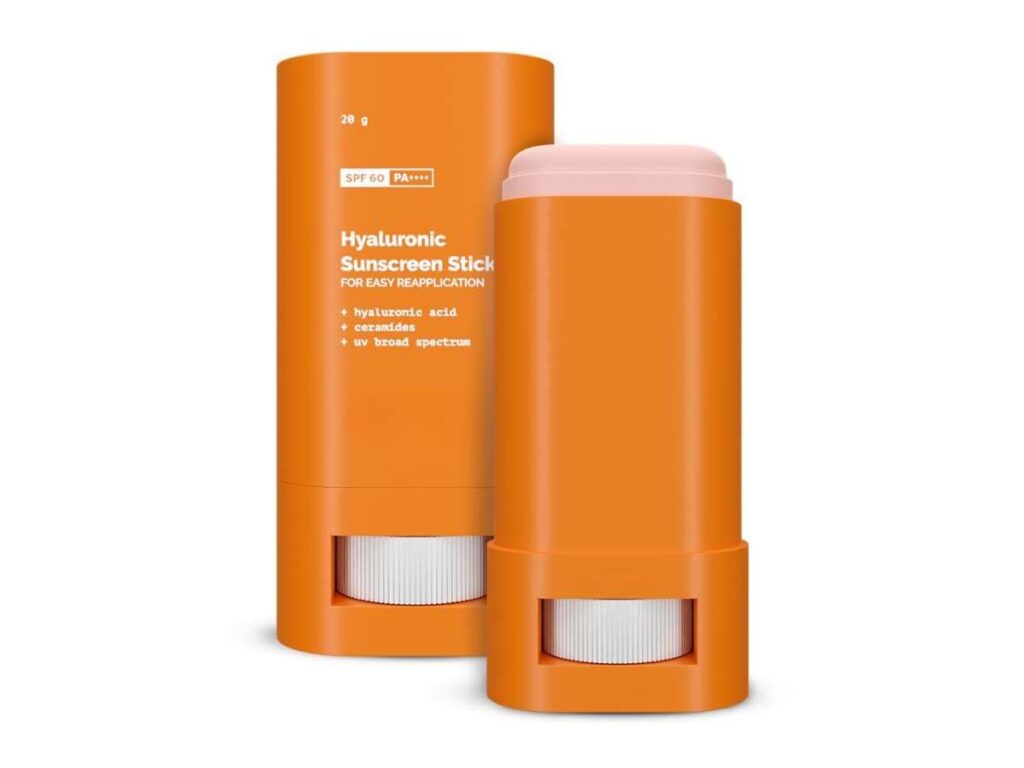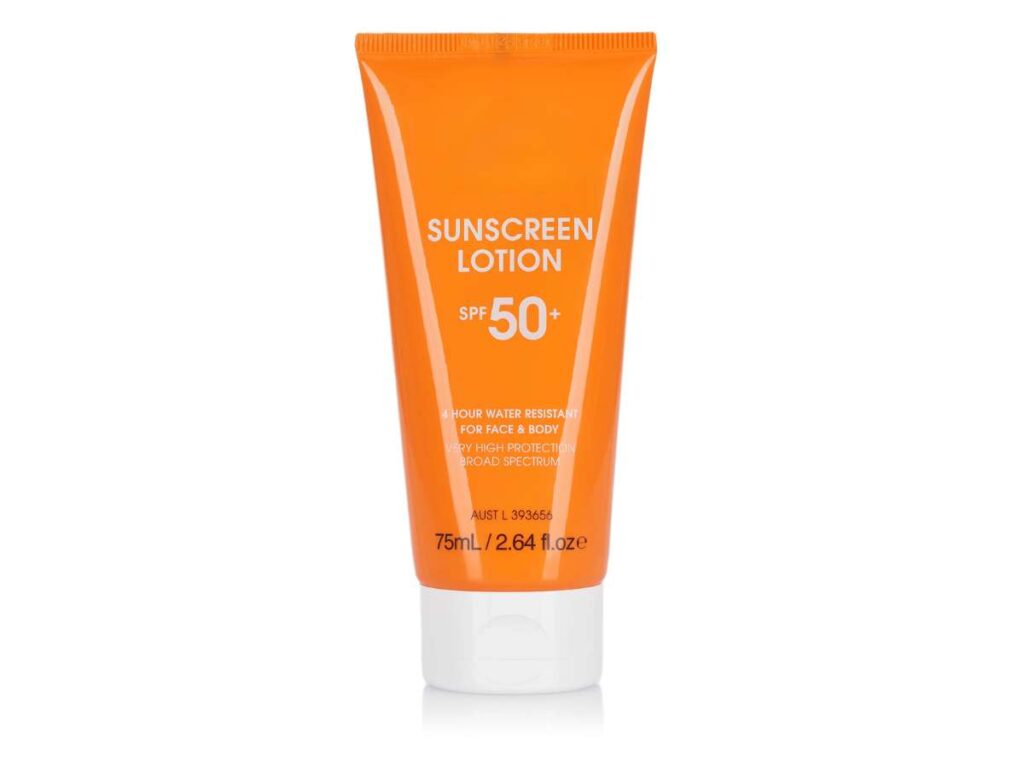Sunscreen Stick vs Lotion: What’s the Difference?

Author: Tommy Tang | Founder at Ridgepole
Hi, I'm Tommy Tang, here to share my expertise in skincare with you.
Table of Contents
Did you know 80% of premature skin aging comes from UV exposure?
With sun protection more important than ever, businesses must choose the right sunscreen format to meet customer needs.
Lotion has been the standard for years, but sticks are gaining popularity for their no-mess application. So, which is better?
I’ve tested both, and the answer isn’t as simple as you’d think.
This article breaks down the pros and cons of sunscreen sticks vs. lotions, covering convenience, effectiveness, and skin compatibility. By the end, you’ll have a clear choice for your business needs.
So let’s get down to it!
1. What is a Sunscreen Stick?
Sunscreen application isn’t always convenient. Lotions can feel greasy, spill easily, and take time to rub in. That’s why sunscreen sticks are becoming a go-to format for quick, mess-free sun protection—a trend that’s shaping consumer preferences in the sun care market.
For businesses in skincare, retail, and e-commerce, understanding how sunscreen sticks differ from lotions can help in stocking the right products, improving sales strategies, and meeting customer demands.
A sunscreen stick is a solid, wax-based sunscreen in a twist-up tube, much like lip balm but designed for the face and body. Instead of squeezing lotion into the hands, users simply swipe and go—making it a cleaner, more portable alternative.

How Does It Work?
Using a sunscreen stick is simple: Twist, swipe, and go—no rubbing required. Unlike lotions, which need to be blended into the skin, the solid formula adheres immediately, forming a protective barrier against UV rays.
This format is especially useful for reapplication throughout the day, making it a strong selling point for outdoor and sports-focused consumers.
What’s Inside?
Sunscreen sticks are formulated to protect and nourish the skin. Here’s what makes them work:
- Mineral filters (zinc oxide, titanium dioxide) – Create a physical shield that reflects UV rays.
- Chemical filters (avobenzone, octinoxate) – Absorb UV rays to prevent sun damage.
- SPF 30 to SPF 50 – Offers broad-spectrum protection for daily sun exposure.
- Moisturizing ingredients (shea butter, coconut oil) – Keep skin hydrated and comfortable throughout the day.
Pros and Cons of Sunscreen Sticks
Pros
- Easy to carry – Small and portable, perfect for pockets, bags, and travel.
- No mess – No need to rub it in, less residue on hands and clothes.
- Precise application – Great for sensitive areas like the face, ears, and neck.
- Long-lasting formula – Thicker texture makes it more resistant to water and sweat.
Cons
- Takes effort to spread – May need multiple swipes to cover larger areas.
- Can leave a white cast – More common in mineral-based formulas.
- Firmer texture – Some formulas require a little pressure to apply, which may tug on sensitive skin.
2. What is Sunscreen Lotion?
Sunscreen lotions have been a core product in the sun care industry for decades. Despite the rise of sunscreen sticks and sprays, lotions continue to dominate retail shelves and online stores. Why? Because they offer full-body coverage, skincare benefits, and product versatility that fit seamlessly into various retail and private-label product lines.
For brand owners, retailers, and distributors, sunscreen lotions provide proven sales performance and broad customer appeal. Whether positioned as a mass-market essential or a premium skincare item, lotions remain a high-demand product across all price points.
However, not all lotions are the same. Understanding how different formulas, packaging, and ingredient choices impact purchasing behavior is key to making profitable product decisions.

How Does It Work?
Sunscreen lotion forms a protective layer on the skin that either absorbs or reflects UV rays, depending on its formula. Some lotions blend in quickly, while others take time to absorb. If white streaks appear, it just means the lotion needs more blending to activate properly.
For businesses selling sun care products, educating customers about proper application and reapplication is key to boosting product satisfaction and repeat purchases.
What’s Inside?
Sunscreen lotions are designed to shield the skin while keeping it hydrated. Here’s a look at what’s inside:
- Mineral filters (zinc oxide, titanium dioxide) – Sit on top of the skin and physically block UV rays.
- Chemical filters (oxybenzone, avobenzone, octinoxate) – Absorb UV rays and help prevent sun damage.
- SPF 15 to SPF 100 – Different levels of protection, depending on how much sun exposure is expected.
- Hydrating ingredients (hyaluronic acid, aloe vera, vitamin E) – Help moisturize and nourish the skin.
Pros and Cons of Sunscreen Lotion
Pros
- Covers large areas easily – Spreads quickly for full-body protection.
- Absorbs better into the skin – Reduces greasy residue when blended properly.
- Hydrates the skin – Often contains moisturizers, making it great for dry or sensitive skin.
Cons
- Can be messy – Requires rubbing in with hands, leaving residue on fingers.
- Frequent reapplication – May wear off faster with sweat or water exposure.
- Can feel greasy – Some formulas leave an oily finish, especially in humid weather.
3. Key Differences Between Sunscreen Stick and Lotion
Sunscreen sticks and lotions both help protect your skin from the sun, but they work in different ways. Sticks are solid and applied directly to the skin, while lotions are liquid and need to be spread by hand. Each type has its own benefits, depending on how you use it and what kind of coverage you need.
| Category | Sunscreen Stick | Sunscreen Lotion |
| Application | Mess-free, hands-free swipe application; no spills | Requires rubbing in for full-body application; may leave hands greasy |
| Coverage | Best for targeted areas like face, neck, and ears; may be uneven if not layered properly | Provides even coverage across large areas, ensuring full-body protection |
| Portability | Compact, spill-proof, and easy to carry; travel-friendly | Bulky packaging, may leak in bags; less convenient for travel |
| Ease of Use | Quick and convenient; no need to rub in | Requires spreading and rubbing, which takes extra time |
| Reapplication | Easy for touch-ups; ideal for on-the-go use | Requires more effort but hydrates the skin while protecting |
| Best For | Active individuals, travelers, kids, and those needing quick application | Daily skincare users, beachgoers, families, and people needing long-lasting hydration |
| Sun Protection | Offers high SPF but may wear off faster due to sweat or friction | More resistant to sweat and water; longer-lasting protection |
| Residue | Can feel waxy or thick on the skin; may leave a slight white cast | Absorbs into the skin but can sometimes feel greasy |
| Water Resistance | Many sticks are water-resistant, making them ideal for sports | Some lotions are water-resistant, but reapplication is needed after swimming |
| Cost Considerations | Often more expensive per ounce due to concentrated formula | Generally more affordable per ounce but requires more product per use |
3. Factors To Consider When Choosing Between Sunscreen Stick and Lotion
Every customer has different needs when it comes to sunscreen. Some prioritize convenience, while others focus on hydration or long-lasting protection. Sunscreen sticks and lotions each have their benefits, and understanding these differences can help you stock the right products for your market.
All-day Protection
For everyday sun protection, lotions remain a reliable choice as they cover large areas easily and absorb quickly. Customers who want a simple morning routine or all-day protection often prefer lotions. They work well for those who incorporate SPF into their daily skincare regimen and need hydration along with sun protection.
Sunscreen sticks, on the other hand, are ideal for quick touch-ups on small areas like the face and neck. Many customers keep them in their bag or pocket for easy reapplication throughout the day. This makes them especially popular with busy professionals, parents, and those who are frequently outdoors.
Sunscreen for Travel & On-the-Go Protection
When it comes to portability, sunscreen sticks have a clear advantage. They are compact, spill-proof, and TSA-friendly, making them easy to carry in travel bags or gym kits. Customers who frequently travel or need on-the-go sun protection often prefer sticks over lotions.
Lotions, while effective for full-body coverage, can take up more space and risk leaking in transit. However, they are still a preferred choice for vacations where extended sun exposure requires thorough application.
Matching Sunscreen to Skin Type
Skin type plays a role in which sunscreen format customers choose.
- Oily skin: Sunscreen sticks are often preferred because they provide a matte finish without leaving a greasy residue.
- Dry skin: Lotions work better as they contain hydrating ingredients like hyaluronic acid and aloe vera, offering both sun protection and moisture.
- Sensitive skin: Mineral-based sticks are a gentler option as they contain fewer irritants. Some lotions, especially those with fragrances or preservatives, may cause irritation.
For businesses, categorizing sunscreens by skin type can help guide customers toward the best choice and improve their shopping experience.
Application Preference
How sunscreen applies and feels impacts buying decisions.Sunscreen sticks provide a mess-free, hands-free application, making them ideal for quick use without rubbing in. However, it may be harder to spread over large areas. Lotions even offer coverage and blend quickly into the skin, making them better suited for full-body protection.
When it comes to reapplication, sticks are more convenient, especially for outdoor activities, sports, and travel. Lotions require more effort but provide a smoother finish for those who prioritize hydration and even coverage.
Conclusion
Sunscreen sticks or lotions—which one fits your product lineup best? The choice depends on how your customers use sunscreen, where they apply it, and what they prioritize most.
Offering both formats allows you to cater to different needs—convenience for active users, hydration for skincare-focused buyers, and full coverage for daily protection.
Which format aligns best with your market’s demand? Now is the time to evaluate your product selection.
Need a manufacturer for your brand? Contact us today to develop your sunscreen line!
Explore More Helpful Resources
Not quite what you’re looking for? Explore our wider product range for more choices:
Still haven’t found what you’re looking for? Don’t hesitate to contact us. We’re available around the clock to assist you.
Quick Quote
Own Your Private Label Cosmetic Line Is No Longer Difficult Here!





